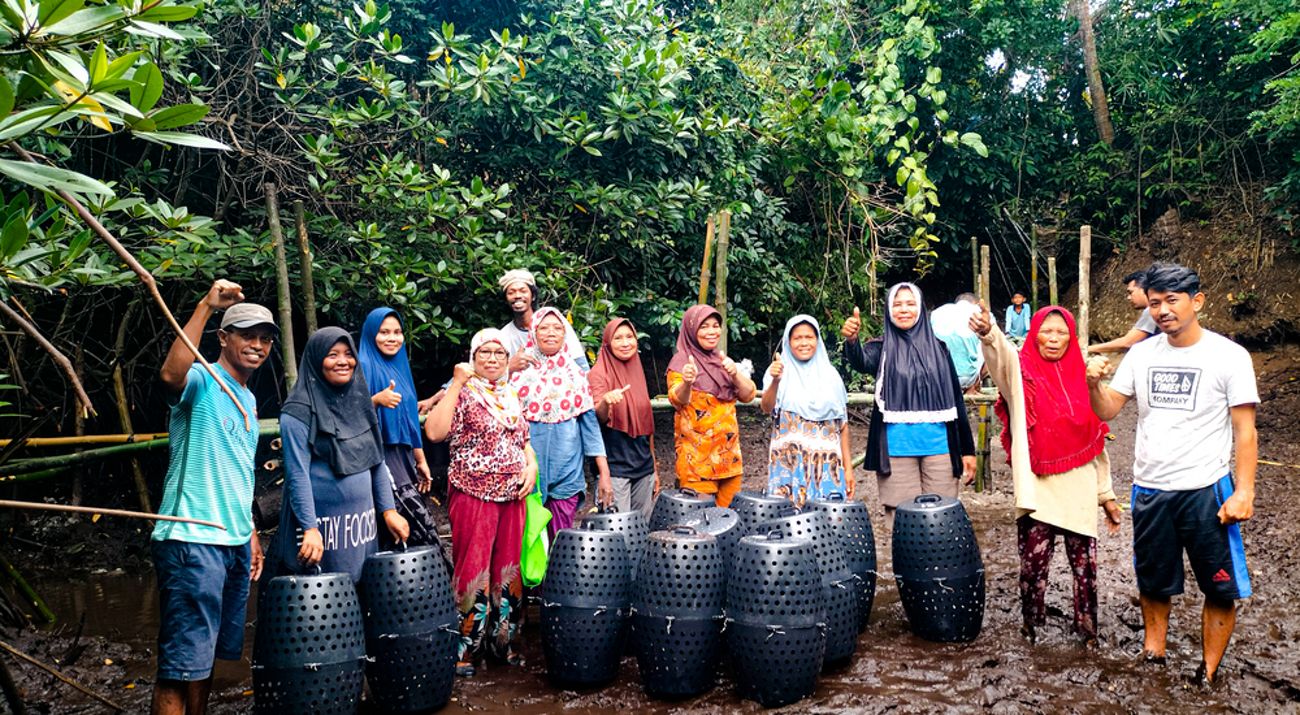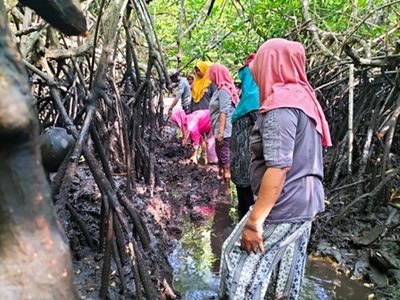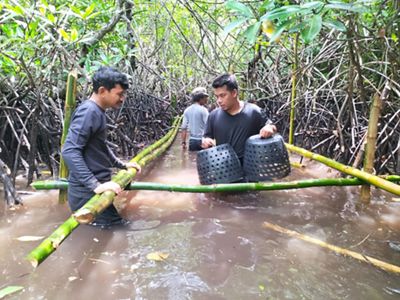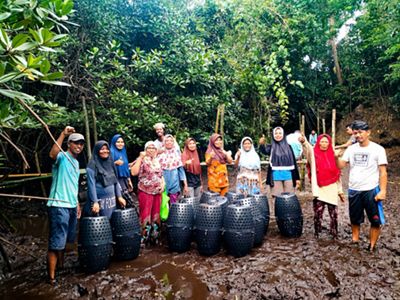
Women's Group and Sustainable Growing of Mangrove Crab in Wakatobi
by La Ode Arifudin, Wakatobi Stakeholder Engagement Coordinator YKAN
Revitalizing local wisdom in supporting natural resource management is not only about protecting one area. In the customary area of Limbo Tombuluruha – Barata Kahedupa – Wakatobi National Park, efforts have also been made to build awareness to increase the economic value of women who have been looking for seafood traditionally, to be precise in the area of the mangrove ecosystem in the form of bivalves and types of shellfish.
In support of the Nusantara Nature Conservation Foundation (YKAN) program, a group of women calling themselves the Saga Jaya Group had the opportunity to take part in an environmentally friendly mud crab enlargement training with the Crab Drum system, namely individual rearing using local seeds in the mangrove ecosystem area. The hope is that the proceeds from the sale of the mangrove crabs will provide additional business capital and increase income for their children's school fees.

"This training helped us greatly because we have no experience raising crabs. We are used to looking for mangroves but don't keep them big. Hopefully, we can because some of us can't even read and write, but with practice, we can understand," said Eslamia, Head of the Saga Jaya group.
The Saga Jaya women's group is a group whose formation was initiated by YKAN in collaboration with the Wakatobi National Park Office on October 17, 2022, consisting of 12 homemakers. Assistance efforts to revive the local wisdom of the Nu Komoa Ship to manage natural resources on the coast of the Limbo Tombuluruha – Barata Kahedupa customary area.
The seacoast area of Limbo Tombuluruha: Barata Kahedupa is a stretch of mangrove ecosystem that grows naturally and well. Currently, the community understands the importance of mangroves to support the life of coastal ecosystems, especially after socialization and training activities that the Wakatobi National Park Office and other stakeholders often carry out.
Some of the people of South Balasuna Village, especially homemakers, utilize the mangrove ecosystem area to look for food sources in the form of mangrove-affiliated marine biotas such as bifalvia, sea cucumbers, and clams. They walk between the gaps in the mangroves and even tend to float in the seawater while diving to look for these marine biotas.

For this reason, as an initial step in increasing women's empowerment, YKAN built communication with the Balasuna Selatan Village government about the importance of increasing capacity through women's groups active as marine biota seekers in the mangrove ecosystem. Then, the Head of Balasuna Selatan Village inaugurated the Saga Jaya Group on October 27, 2022, with Letter Number: 145/159/DBS/2022.
The mangrove ecosystem on the coast of Balasuna Selatan Village is also a suitable habitat for mud crabs, so it was agreed that the line of business that the women's group would carry out was mud crab growing. The main target in building communication with the government is to integrate support and the inclusion of village planning programs related to the mud crab enlargement business for community groups in Balasuna Selatan Village.
The vision of the Saga Jaya group is to improve the welfare of group members and the people of Balasuna Selatan Village – Limbo Tombuluruha through the growing and selling of mud crabs which can be realized through 3 missions, namely (1) developing the mud crab growing business, (2) increasing the capacity of group members, and (3) maintaining the preservation and sustainability of the surrounding natural resources.
The agreed rearing method is individual rearing in crab drum containers using local crab seeds on Kaledupa Island. The choice of this method was based on the experience of the previous mud crab rearing group on Kaledupa Island with the natural stocking system, which experienced crop failure because the seeds used were from outside the area, and the crabs preyed on one another in the fence cages surrounding the crab release area.

The mud crab enlargement activity in the mangrove ecosystem using the Crab Drum method is the first time it has been carried out in Wakatobi, especially on Kaledupa Island, to increase income and help the family economy by selling mud crabs. In addition, the enlargement of mangrove crabs by utilizing natural gaps in the mangrove ecosystem is a practical educational step for the community, especially the Saga Jaya group, to always maintain the preservation of the mangrove ecosystem and its surroundings because the enlargement of mangrove crabs is very closely dependent on the environment of the mangrove ecosystem which is well preserved.
However, because this business has only been started since January 2023, until now, the sale of enlarged crabs has yet to be carried out optimally because the maximum selling value of crabs is when at least the weight per head reaches 1 kg. For this reason, the Saga Jaya group continues to provide food as trash fish to the crabs in the Crab Drum.

